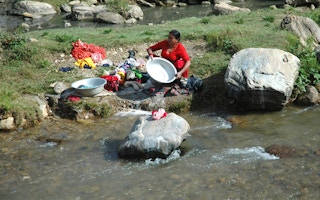Global household products maker Procter & Gamble said on Monday it will eliminate phosphates from all of its laundry detergents in the next two years.
Mass market brands including Tide, Ariel, Ace and Bonux will no longer have the chemical while still maintaining its cleaning performance, the United States-based company said.
The company’s Group President of Global Fabric and Home Care, Gianni Ciserani, said the new initiative is part of the company’s commitment to innovation, research and development to improve the performance of its laundry products while it also conserves natural resources.
“P&G has been gradually reducing the consumption of phosphates since 2005,” Ciserani said in a statement.
The company is expecting that by the time the new laundry detergent formulations are fully implemented, P&G will have eliminated close to half a million metric tonnes phosphates per year compared to its peak consumption during calendar year 2005, Ciserani added.
“
In Asia Pacific, there are no established policies in countries concerning the phasing out of phosphates in detergents. Australia, however, in 2011 announced that its laundry detergents will be phosphate-free by 2014 as major companies in the country have implemented or agreed to phase out phosphates in its laundry detergents
The company has already removed phosphate as an ingredient in its laundry care products in some regions such as in the US and in Europe.
Phosphate is considered a water-pollutant as it does not degrade naturally in surface water, except with the use of water treatments. Pollution from phosphates in water systems not only comes from detergents, but also from fertilisers washed down to rivers and waterways.
Studies have shown that phosphate pollution in surface waters lead to eutrophication, a process in which there is an excess of nutrients such as phosphates and nitrates in the water. This promotes the growth of algae or the so-called algal bloom. As the algae die, it consequently consumes oxygen in the water, depleting the resource for other marine life.
In Asia Pacific, there are no established policies in countries concerning the phasing out of phosphates in detergents. Australia, however, in 2011 announced that its laundry detergents will be phosphate-free by 2014 as major companies in the country have implemented or agreed to phase out phosphates in its laundry detergents.
While trends in the use of phosphate-free detergents have been rising in the past few years,consumers who have been early adopters of this ‘greener’ option have expressed dissatisfaction over their cleaning capacity.
This leaves room for further market developments and opportunities for companies such as P&G, which are continuously investing in innovation and research. P&G said its detergent brands will maintain the cleaning quality despite the removal of phosphates.
“Through hard work and commitment, we are continuously innovating to make it easier to care for the world on wash day,” Ciserani added.
The company has a presence in almost all Asian markets including China, Japan, Korea, Hong Kong, India, Australia, New Zealand, Indonesia, Philippines, Singapore, Taiwan, Vietnam, Thailand, Sri Lanka, Malaysia, and Bangladesh.
It has its regional headquarters in Singapore and employs about 800 scientists in four technical centres in Bangalore, India; Beijing, China; Kobe, Japan and Singapore.
Len Sauers, Vice President for Global Sustainability at P&G commented, “Our size and scale provide us with a unique opportunity to make a difference when it comes to changing consumer behaviour. With this very concrete action of our Fabric Care Business as well as those to follow, we intend to improve the quality of people’s lives today and for generations to come.”

















